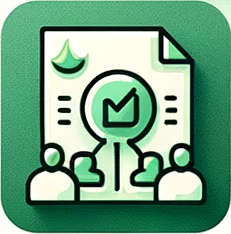
Welcome to rmToo, an innovative and free open-source requirements management tool. Embrace a streamlined approach with rmToo, uniquely optimized for command-line handling of requirements. Dive into an environment where traditional toolsets are replaced with command-line operations.

Unique Approach and Features
- Command-Line Efficiency: rmToo revolutionizes requirements management by utilizing command-line tools, providing a seamless experience for users accustomed to text editors and command-line interfaces like Emacs, vi, and Eclipse.
- Versatile Output Formats: Create diverse artifacts including PDFs, HTML documents, and various graphs, all interlinked and integrated within your development workflow.
- Full Git Integration: Benefit from complete integration with Git for history tracking, statistics, and baseline management.
- SCRUM and Agile Support: Comprehensive support for SCRUM artifacts and agile project development, enhancing your project management process.
- Customizability and Modularity: rmToo offers a highly customizable experience with modular design, allowing for easy extension and adaptation to specific needs.
- Robust Analytics and Editing: Advanced analytics modules and an Emacs mode for requirement editing, ensuring quality and efficiency.

Getting Started
Embark on your rmToo journey with our comprehensive guide, tailored for a straightforward and efficient setup process.
- Installation via Virtualenv and Pip: Experience a hassle-free installation process with virtualenv and pip. This method ensures that all Python dependencies are correctly installed, streamlining your setup. Simply create a virtual environment, activate it, and use pip to install rmtoo. This approach is ideal for maintaining a clean and isolated development environment, making it easy to manage and update rmtoo.
- First Project Setup: Kickstart your first project with rmtoo by copying the provided template project. Follow our easy steps to set up your environment, run necessary commands, and begin adapting the project to your specific needs.

Documentation
Comprehensive Documentation: Access detailed man pages, presentations, and a self-documented requirements set that offers a thorough understanding of rmToo’s capabilities.

Project Updates and Releases
- State of Completion: rmToo has reached a stage of maturity and completion, recognized as a robust and reliable tool in the field of requirements management. The tool is considered final in its current form, embodying a comprehensive suite of features and capabilities.
- Maintenance and Compatibility Updates: While rmToo is in a stable and finished state, we remain committed to its upkeep. Future updates will primarily focus on maintaining compatibility, especially in response to changes in dependencies like Python. These updates ensure rmToo continues to function seamlessly in evolving technical environments.

Licensing and Contact
- Open Source Licensing: rmToo is GPL v3 licensed, ensuring free and open use.
- Commercial Support: Available commercial support for rmToo. Contact us for tailored solutions and guidance.

Links
- Source code, releases and documentation can be found on github.
- python package for installing in a python virtual env is on pypi.

Footer
- Impressum and Contact: Find our contact details for any inquiries or support needs. We’re here to assist you in leveraging the full potential of rmToo for your projects.